Winchester area
Birding in the Winchester area(as
published in Kingfisher, the HOS newsletter, summer 2006)
For those of us living inland in Hampshire, with a day to go birding, the temptation is to get in the car (or on the bike...), and head for the coast, or at the very least the New Forest. However, there are several sites in the centre of the county which repay attention from birders, and (with luck) can produce excellent birding. In this article, I detail four sites, covering farmland/downland, woodland, riverine and lakeside sites.
|
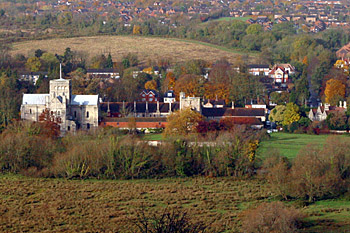 |
Cheesefoot Head |
|
|
For many years, Cheesefoot Head has been something of an arable 'desert', apparently stripped of much of its birding interest by intensive agriculture. However, in recent years, intensive watching and some small but significant habitat improvements, including increased game cover and set-aside plots, have revealed new promise for this area. The main season of interest is winter, when raptors feature prominently. Buzzards are common, with up to 20 present, and small numbers of Red Kites often disperse to the area from newly established breeding sites. These brought with them a Black Kite in early 2003, as well as a bird strongly suspected as being a hybrid Red x Black Kite (see HBR2004). Short-eared Owls, Hen Harriers, Peregrines and Merlins are all regularly seen, and an escaped Red-tailed Hawk has been in the area for some time, at least until last winter. There are historical records of Rough-legged Buzzard, too. Wintering passerines include significant numbers of thrushes, Skylarks, Meadow Pipits and sometimes finches - a major gathering of Bramblings in early 2004 peaked at over 1000 birds, and Redpolls are occasionally present too. Buntings also occur, principally Yellowhammers, but also some Reed and Corn Buntings. This elevated site is also a good one for observing visible migration, of (for instance) Wood Pigeons and finches. In the spring and summer, interest wanes considerably, but Corn Buntings are sometimes present in the area, albeit thinly, and raptor sightings remain feasible - Hobbies are not infrequent, both Red and Black Kites have been seen, and even Montagu's Harrier has occurred in recent years, although local breeding is not suspected. Quail may be present in good years, and Lapwings and Skylarks breed in the arable fields. Access: park at the car-park at SU528278, and explore the footpaths to the south on Longwood Warren and Fawley Down, paying particular attention to any patches of stubble or game cover.
|


|
Crab Wood |
|
|
Crab Wood is an excellent area of Ancient Woodland, which forms a small but important part of the Farley Mount Country Park, about 5km west of Winchester. Bird interest is greatest in spring and summer, but winter can produce good views of resident woodland species. This is one of the best sites I know for seeing Marsh Tit, and Nuthatch, Treecreeper and Great Spotted Woodpecker are frequent. A recent record of Hawfinch was the first for many years. Nightingales sadly no longer occur, and neither do Grasshopper Warblers or Nightjars, although rotational cutting of adjacent blocks of managed woodland may see the return of the latter in the future. Raptors are represented by Sparrowhawk and Buzzard, as well as Tawny Owl. In summer, non-bird interest is provided by numerous specialist plants, including Lily of the Valley, Three-cornered Leek and both species of Butterfly Orchid, and butterflies, especially White Admiral and Silver-washed Fritillary (although Pearl-bordered Fritillary has been extirpated, and Purple Emperor is only rarely seen these days). Mammals are well represented all year, but rarely seen, and include Hazel Dormouse and (unfortunately) Muntjac Deer. In autumn and early winter, the area is a superb one for fungi, including Earth-stars - this is still the only place where I have seen the stunning (and gothically-named) Destroying Angel. Access: park along the minor road leading to Crabwood Farm at about SU440295, and walk west into Crab Wood. There are many circular paths, and you can explore beyond the Sparsholt Road into the West Wood complex too.
|
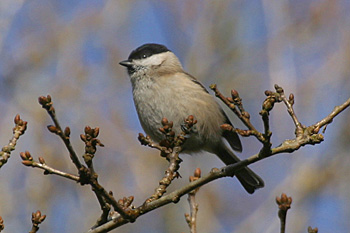 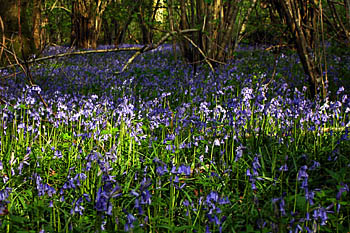 |
The Itchen Valley |
|
|
The whole Itchen Valley is a productive linear site, but much of it is private and inaccessible. The bird interest of the valley has declined considerably in recent years, both for breeding birds and winterers. Where Yellow Wagtails, Redshank and Snipe used to breed, there is now silence. This is largely to do with the drying out of wet meadows, but much suitable habitat remains, and larger, more pernicious factors may be at work. Two good areas to explore are Winnall Moors NR and the permissive riverside paths along the Itchen and Itchen Navigation Canal, both south of Winchester. These sites support Sedge, Reed and Cetti's Warbler (and formerly Grasshopper Warbler), as well as smaller numbers of Reed Buntings (another locally declining species). Recently increasing species include Canada Goose (now worryingly abundant), Grey Heron (frequently seen, when once quite scarce) and Little Egret (now present year round, but most commonly found in winter). Gadwall began breeding in the early 1980s, though appear to be much less common nesters than they were a decade ago - Tufted Ducks now rarely breed in the area. Significant numbers of wildfowl use the river in winter - scarce visitors have included Goosander, Goldeneye and even Slavonian Grebe and Red-throated Diver - albeit many years ago! Probably as a result of the relatively intensive watching the Winchester area receives, there have been a number of exciting rarity records down the years - Little Bittern (1964), Red-footed Falcon (1977), Corncrake (1957), Little Auk (1983), Alpine Swift (2004), Yellow-browed Warbler (1959 and 2004), Little Bunting (1986) and perhaps best of all, Britain's fifth American Redstart (co-found by a certain [teenaged] Simon Woolley) in October 1985. Non-bird interest is supplied by a healthy population of Water Voles (try in the College water meadows south of the city), while Otters are also present, but rarely seen. Banded Demoiselles are common in summer, as are Scarlet Tiger moths. Access: Winnall Moors is accessed via Durngate in central Winchester at SU487297. The footpaths along the Itchen and Itchen navigation canal south of Winchester College have open access - begin your walk from the car-park at SU484281.
|
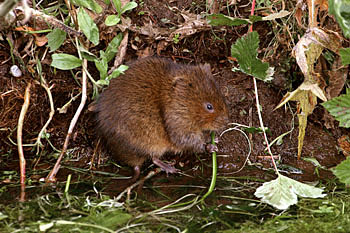 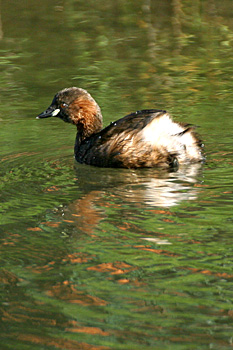 |
Alresford Pond |
|
|
Alresford Pond is an artifical lake, created in the late 12th century. It was once much more extensive, but now covers about 30ha (including surrounding wet habitats). It is the best eutrophic lake in the chalk valleys of Hampshire. In summer, breeding Reed, Sedge and Cetti's Warblers enliven the reedbeds, while large numbers of hirundines and Swifts feed overhead. Ruddy Duck, Pochard, Gadwall and Shoveler have bred in the recent past. Little Egrets are frequent visitors all year (and a Great White Egret was present at nearby Alrebury three winters ago), and Cormorants are ever present. Kingfishers are present all year, along with Grey Wagtails. During the passage periods, especially autumn, low water levels (or, rather, high silt levels!) can attract waders - before a major dredging exercise in late 1993, the mud attracted both Black-tailed Godwits and Wood Sandpipers, among others. Other scarce passage birds might include Osprey, Little Gull or Black Tern. In winter, larger numbers of wildfowl are present, but rarely include scarce species - the lake is probably too shallow to attract large numbers of diving ducks. Large numbers of gulls drop in en route to roosting/feeding sites, and may include the occasional Mediterranean or even Ring-billed Gull. Water Pipits may still occasionally occur in winter on the adjacent derelict watercress beds. Larger birds regularly seen in winter include Bittern and Hen Harrier both best sought in dusk watches of the reedbeds, and occasional Merlins. Access: It is best to park in New Alresford, and walk north
past The Globe public house to view from the platform on the west
side of the pond at SU588332. Alternatively, view from the garden
of the pub itself! |
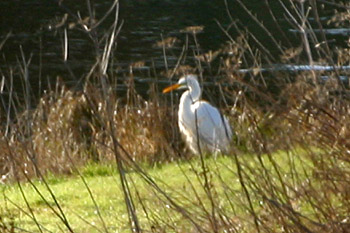 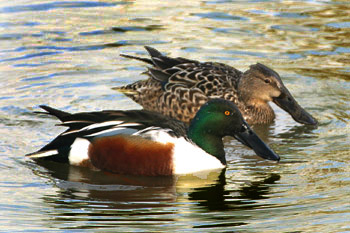
|
Other non-birding sites:
|
|
Magdalen Hill Down |
|
|
This is an area of very steep, restored chalk downland, on the
eastern side of Winchester, and has a rich variety of plants and
wildlife. It was extended in 1995 and the new area has been sown
with grass seed taken from other Hampshire nature reserves in order
to recreate the former diversity of the unimproved grassland. |
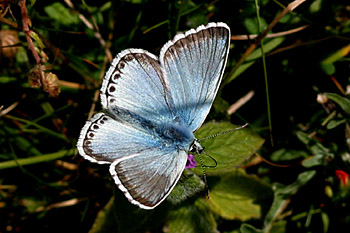
|
Yew Hill |
|
|
Yew Hill is on the western edge of Winchester and is another downland
site, albeit a fairly small reserve. It also holds a covered reservoir
belonging to Southern Water. |
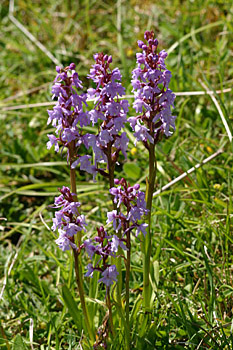 |